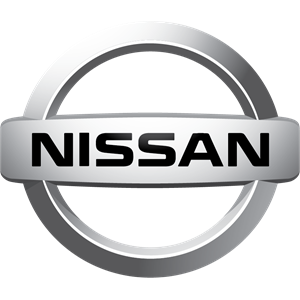 Nissan Versa Sedan Service ManualElectrical & power control » LAN System (LAN) » CAN Communication system
Nissan Versa Sedan Service ManualElectrical & power control » LAN System (LAN) » CAN Communication system
CAN Communication system : System Description
CAN Communication system : System Description
SYSTEM DIAGRAM

DESCRIPTION
CAN (Controller Area Network) is a serial communication line for real time application. It is an on-vehicle multiplex communication line with high data communication speed and excellent error detection ability. Many electronic control units are equipped onto a vehicle, and each control unit shares information and links with other control units during operation (not independent). In CAN communication, control units are connected with 2 communication lines (CAN-H line, CAN-L line) allowing a high rate of information transmission with less wiring.
Each control unit transmits/receives data but selectively reads required data only.
CAN COMMUNICATION SIGNAL GENERATION
- Termination circuits (resistors) are connected across the CAN communication system. When transmitting a CAN communication signal, each control unit passes a current to the CAN-H line and the current returns to the CAN-L line.

- The current flows separately into the termination circuits connected across the CAN communication system and the termination circuits drop voltage to generate a potential difference between the
CAN-H line and the CAN-L line.
NOTE: A signal with no current passage is called "Recessive" and one with current passage is called "Dominant".

- The system produces digital signals for signal communications, by using the potential difference.

THE CONSTRUCTION OF CAN COMMUNICATION SIGNAL (MESSAGE)


CAN Communication Line
The CAN communication line is a twisted pair wire consisting of strands of CAN-H (1) and CAN-L (2) and has noise immunity.

NOTE: The CAN communication system has the characteristics of noise-resistant because this system produces digital signals by using the potential difference between the CAN-H line and the CAN-L line and has the twisted pair wire structure.
Since the CAN-H line and the CAN-L line are always adjacent to each other, the same degree of noise occurs, respectively, when a noise (1) occurs. Although the noise changes the voltage, the potential difference (2) between the CAN-H line and the CAN-L line is insensitive to noise. Therefore, noise-resistant signals can be obtained.

CAN Signal Communications
Each control unit of the CAN communication system transmits signals through the CAN communication control circuit included in the control unit and receives only necessary signals from each control unit to perform various kinds of control.
- Example: Transmitted signals

- Example: Received signals

NOTE: The above signal names and signal communications are provided for reference purposes. For CAN communications signals of this vehicle, refer to LAN "CAN COMMUNICATION SYSTEM : CAN Communication Signal Chart".
CAN COMMUNICATION SYSTEM : CAN Communication Control Circuit
CAN communication control circuit is incorporated into the control unit and transmits/receives CAN communication signals.



*: These are the only control units wired with both ends of CAN communication system.
